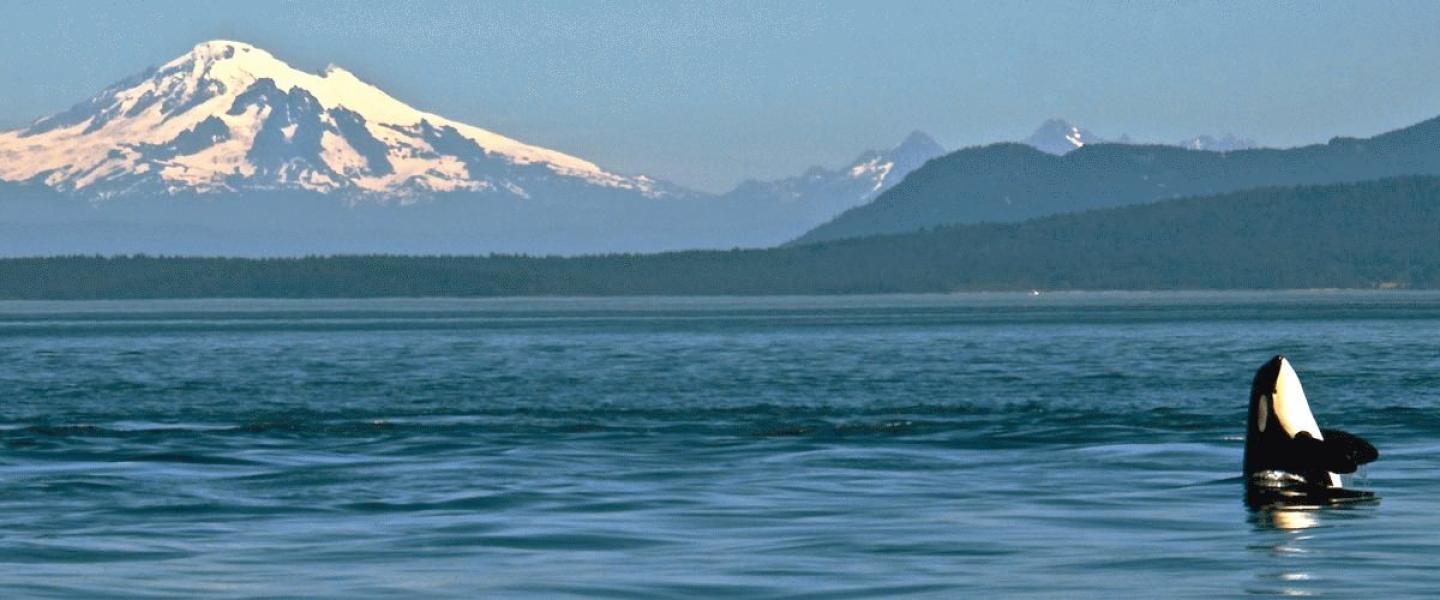
#53 - Photo courtesy of Cascadia Research Collective
Today we followed whales across the Strait of Juan de Fuca. A vague report of a whale south of San Juan Island became a gray whale known as #53 (see photo above). On our way towards the area where he was said to be, one of our guests spotted something else in the water. I quickly left the bridge to sit on the bow and see if I could help find anything. Sure enough, up popped a juvenile minke whale a few hundred yards from us. The guests that came up to the bow when the boat slowed down had the opportunity to see the whale surface several times before finally slipping away. He was moving rather quickly for a minke and made numerous direction changes. All good indicators that he was being well fed by the sea.
Minke whales are a small baleen whale that are common in the Salish Sea. All of this means that they are 30 feet long with a flat, streamlined body and are filter feeders that live in the waters around the San Juan Islands and Puget Sound. Like other baleen whales they require huge clouds of plankton, krill and bait fish to survive. Since cold waters have more food, and therefore more life, in them than warm waters, baleen whales are fond of this area. Besides minke and grey whales, we also see humpback whales, just like the one spotted on May 18th. Since our minke friend gave us the slip, it was time to go and join the hunt for the grey whale.
We met up with other boats at Eastern Bank about 3.5 miles west of Smith Island. After watching the water for a few minutes there was finally a great blow 500 yards off of our bow. We got to see one more before the gray whale went down on an extended dive. All in all we saw him surface several times over the next hour and we were rewarded to views of his tail fluke twice.
The sun peeped in and out of the clouds and the breezes kept us bundled up. It was worth it though to see one of the grey whales that are considered residents in these waters. As Cascadia Research Collective expands their knowledge of this species and population, and integrates all of the sightings and photographs from throughout the year, the more we will all know. We may even find that the San Juan Islands are just as good a place to see grey whales as the lagoons of baja Mexico are.
So, from Capt. Mike, Ashley, the M/V Sea Lion and all of us at San Juan Safaris, to all of you who think that grey/gray matters, thank you and we will...
See You In The Islands!
~Tristen, Naturalist